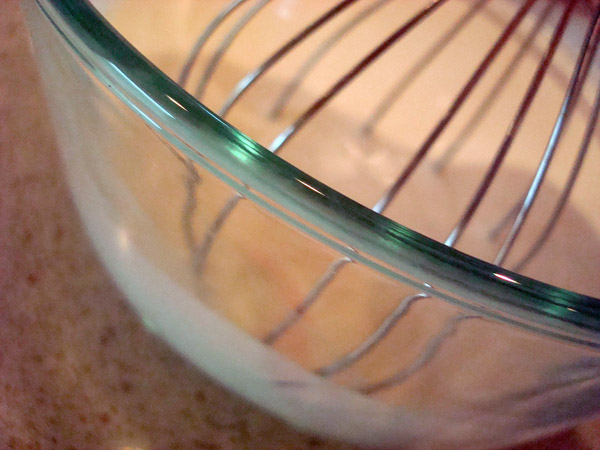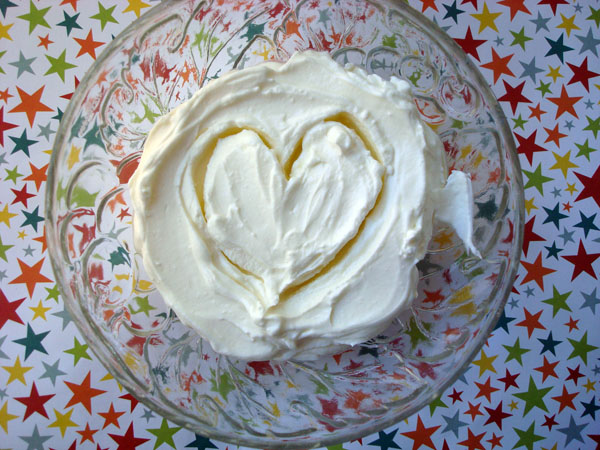As fancy as it may sound, you don’t have to be a French chef to learn how to make homemade crème fraîche.
As a matter of fact, making crème fraîche at home is downright simple — this fancy French sour cream comes together quicker than figuring out how to pronounce it correctly (that would be “cremm fresh,” spoken in your Frenchiest accent possible).
With less than two minutes of active time and only two ingredients required, learning how to make crème fraîche at home is a cooking technique that anyone can master.
What is crème fraîche, exactly?
In a phrase: fancy French sour cream. It’s made by adding a culture to heavy cream and then letting it sit at room temperature until it ferments, causing the mixture to thicken. Crème fraîche is characterized by a high fat content (higher than most sour cream) and a rich, but relatively mild, flavor.
In la belle France, unpasteurized cream is key in causing the reaction with the culture. In places where all cream is pasteurized or ultra-pasteurized, like the U.S., a different method is taken: mixing in a lactic culture. Buttermilk is ideal for its distinct flavor, but yogurt with an active culture can also be used.
What do I need to make crème fraîche?
Basically, all you need is heavy cream and buttermilk. Since the flavors will be distinct, invest in a good quality container of each. It makes a difference.
Is it really OK to leave it at room temperature?
Yes, it’s true: to allow the crème fraîche to become firm in texture, you have to leave it at room temperature for 12 to 24 hours. Concerned about the dairy spoiling? Don’t be. The “good bacteria” in the buttermilk will kill any bad, potentially disease-causing bacteria, so this process is safe.
Once the reaction has occurred and the crème fraîche has come together, store it in the refrigerator.
Why is there such a big range in the times the mixture sits?
As you’ll see, the recipe calls for 12 to 24 hours of time to develop. That is because depending on the temperature in the space it rests, and the ingredients you use, there can be some variances. Ideally, keep the mixture at room temperature; don’t keep it in very hot, cold or humid conditions.
If you’re making the crème fraîche for a specific meal or event, err on the side of caution and give yourself plenty of time. Additionally, you can use this time variance to monitor the crème fraîche until it has reached the texture of your liking. If you like a more liquid consistency, you may err on the short end of the resting time. It’s absolutely all right to take peeks at the crème during the waiting time to monitor its texture.
How to make crème fraîche at home
Makes about 1 cup
Ingredients:
- 1 cup heavy cream
- 2 tablespoons buttermilk
Step 1:
In a bowl or wide-mouthed jar or medium sized bowl, combine the cream and buttermilk. They will look slightly like oil and water when initially combined, with the buttermilk forming little circles on top.

Step 2:
Whisk gently to incorporate.

Step 3:
Cover with a clean towel and store at room temperature on the counter for 12 to 24 hours.

It should attain a consistency that is thick, almost like that of Greek yogurt. As you can see above, some cracks may form — this is totally OK. Once you give the crème fraîche a stir, it will have a thick yet easily spoon-able consistency.
Once the reaction has occurred and the crème fraîche has come together, store it in the refrigerator.

How to use crème fraîche
A very pleasant attribute of crème fraîche is its versatility. It is more mild than sour cream, so it can easily go sweet or savory.
Here are some suggestions for uses, but please, don’t let these suggestions limit you in any way. If you suspect a dish will taste good with crème fraîche, the odds are in your favor that it probably will.
- Add a dollop of crème fraîche to a bowl of fruit and drizzle with honey for a pleasant snack or light dessert.
- Infuse the crème fraîche with herbs or homemade toasted spices and put in mason jars; use whenever you’re creating cuisine with which the flavors will be harmonious. (Would make a lovely handmade food gift!)
- Garnish French toast or pancakes with crème fraîche and fruit.
- Make an extra-special icing by mixing crème fraîche with confectioners’ sugar until it reaches your desired flavor and texture. It makes for a fancy cupcake topping, or a great way to finish a pound cake.
- Finish homemade soups with crème fraîche on top. It will gently and luxuriantly melt into the soup, adding a creamy, rich flavor.
- Use it along with your favorite seasonings on a baked potato.
- Did we mention it pairs beautifully with basically anything French? Learn the secrets of French cookery in Craftsy course French Cooking at Home: The Food of Provence.


Share tips, start a discussion or ask one of our experts or other students a question.
No Responses to “Crème of the Crop: Making Crème Fraîche at Home”